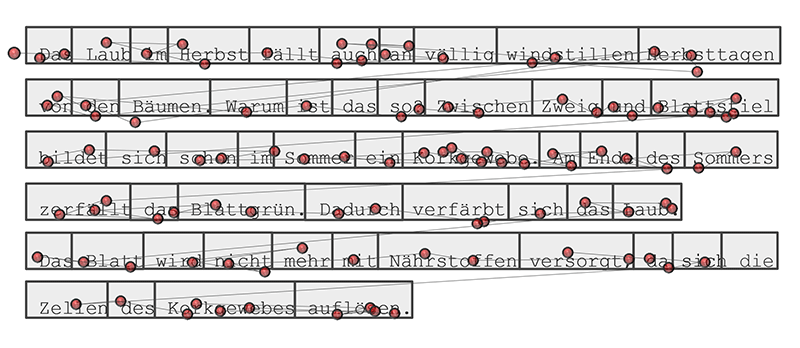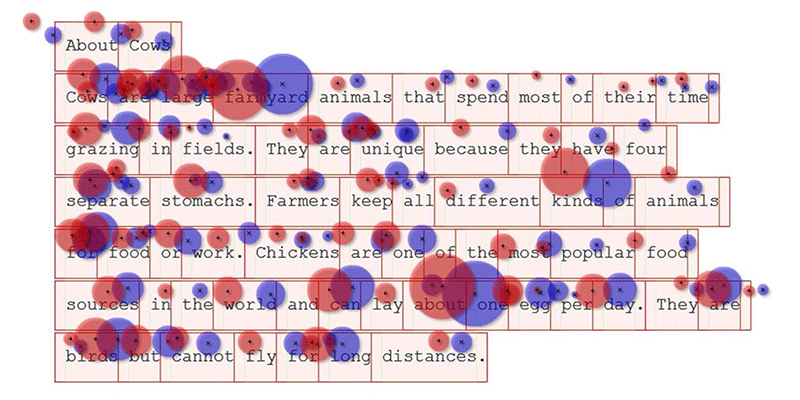Are your eyes working as an efficient team?
Efficient readers move their eyes reasonably sequentially along lines of print, ideally taking in words as units without much visual wandering or excessive eye movements and fixations (eye stops).
If students have poor text navigation skills, making multiple fixations per word to capture visual impressions in an attempt to unlock the meaning of words, they will experience reading as a very labor-intensive and exhausting process.
For example, in the following passage, the red dots indicate that the reader often made 2 to 4 fixations to take in invididual words. Efficient readers, on the other hand, typically take in between 1 to 1.5 words per fixation.
Text Navigation Skills

When readers extensively re-fixate on the same words as they read, passage comprehension will be greatly diminished as excessive attention is dedicated to the mechanics of reading rather than information processing and understanding. These students typically will not enjoy reading and avoid it whenever possible.
The ability to align eyes accurately on a target to fuse images from both eyes into a single image is essential to be able to effectively locate targets and achieve depth perception (College of Optometrists in Vision and Development, 2022). If students struggle to converge their eyes at the right depth, reading will become a very confusing and exhausting task.
For example, in the following passage, the red and blue dots indicate the fixation positions of the reader’s left and right eye. As you can see, the eyes often did not meet at the same fixation points or land on the lines of text. Larger circles indicate that the reader spent more time associating meaning with the visual impressions. Efficient readers, on the other hand, typically display greater alignment between their eyes both in regard to fixation position and duration time.
Aligned Eyes and Depth Perception

Students who exhibit the reading pattern displayed above typically experience one or more of the following symptoms: words moving on the page, skipping words, creating (i.e., seeing) words that do not match the print, complaining about headaches and fatigue, poor handwriting, motion sickness, closing or covering one eye, being inattentive, clumsy, or feeling excessively challenged engaging in sports that require aim and eye-hand coordination (College of Optometrists in Vision and Development, 2022).
